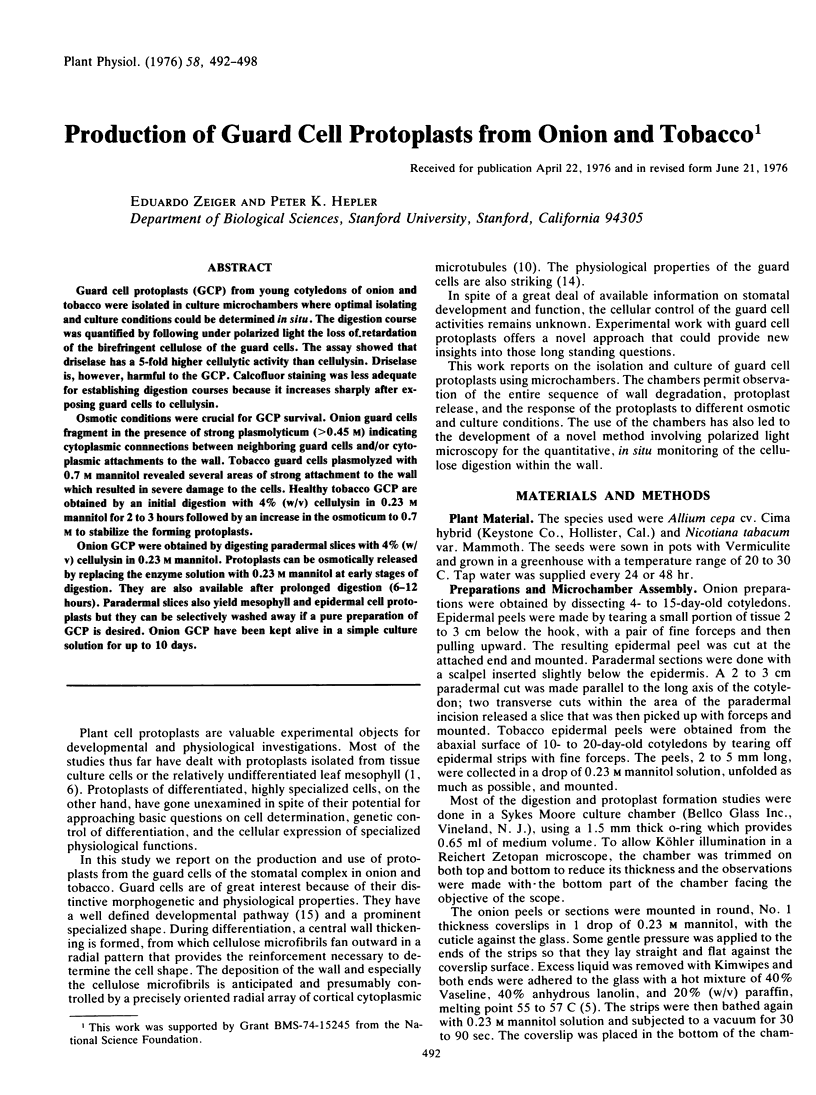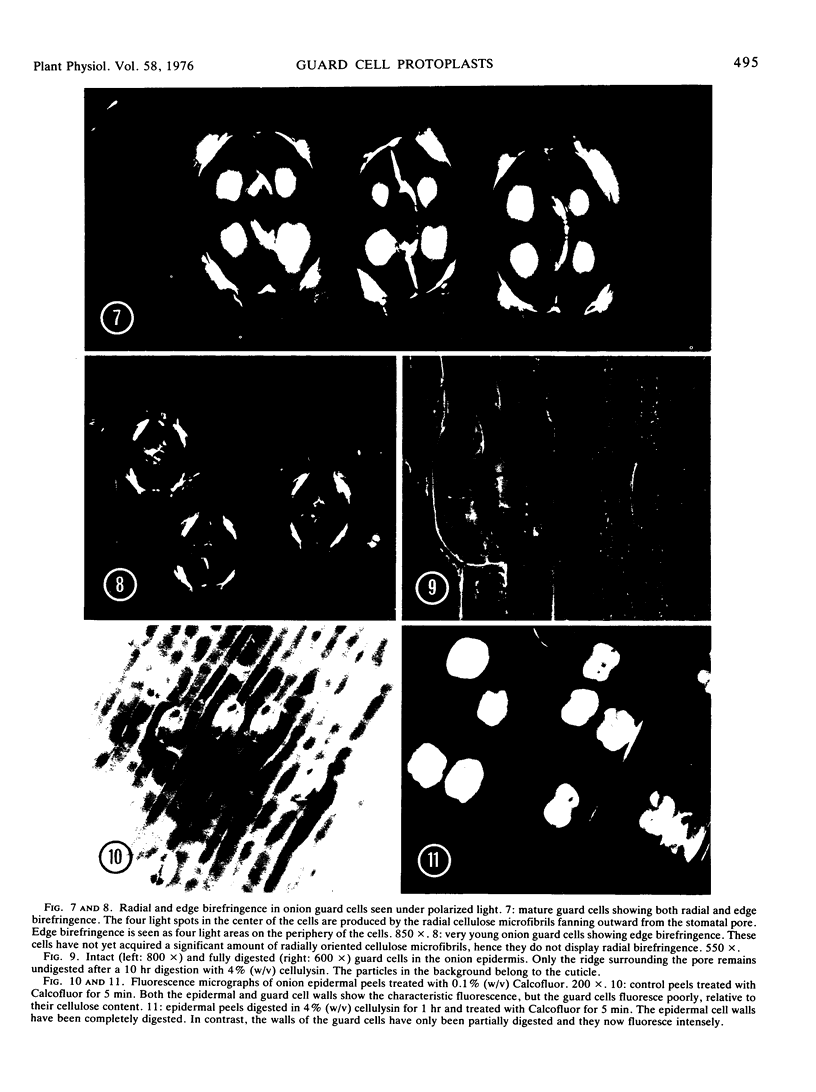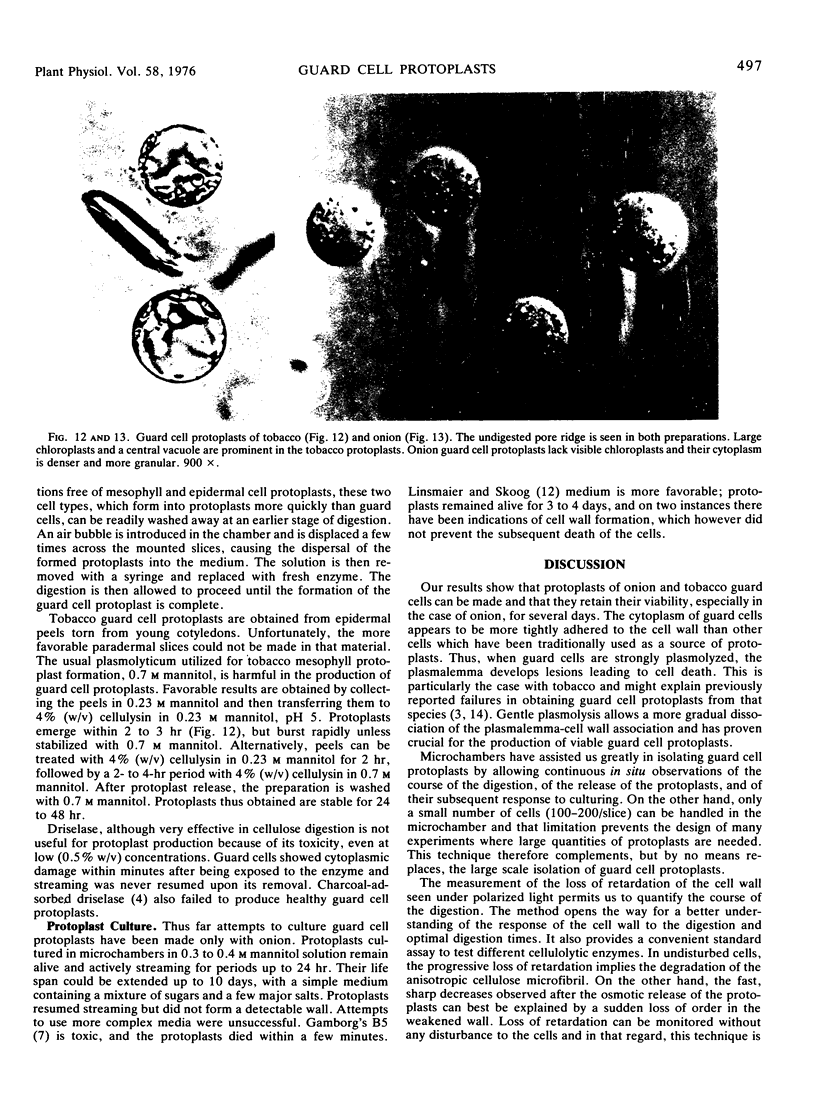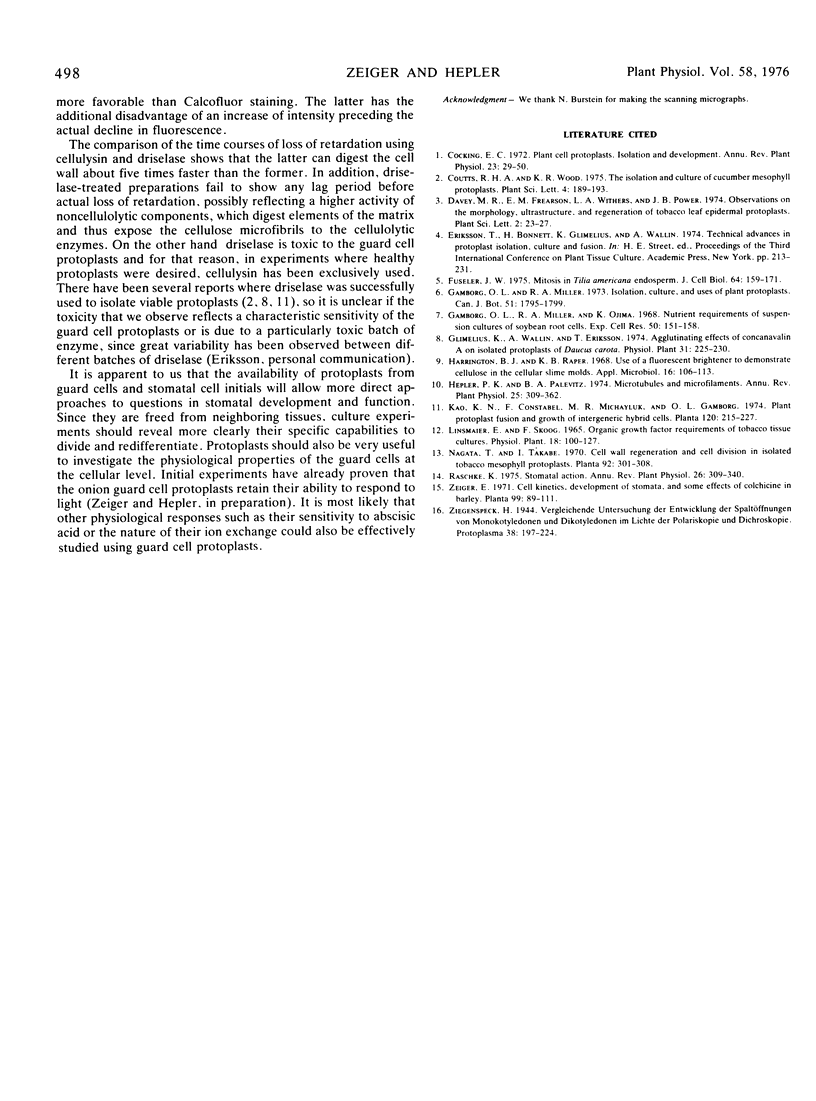Abstract
Guard cell protoplasts (GCP) from young cotyledons of onion and tobacco were isolated in culture microchambers where optimal isolating and culture conditions could be determined in situ. The digestion course was quantified by following under polarized light the loss of.retardation of the birefringent cellulose of the guard cells. The assay showed that driselase has a 5-fold higher cellulytic activity than cellulysin. Driselase is, however, harmful to the GCP. Calcofluor staining was less adequate for establishing digestion courses because it increases sharply after exposing guard cells to cellulysin.
Osmotic conditions were crucial for GCP survival. Onion guard cells fragment in the presence of strong plasmolyticum (>0.45 m) indicating cytoplasmic connections between neighboring guard cells and/or cytoplasmic attachments to the wall. Tobacco guard cells plasmolyzed with 0.7 m mannitol revealed several areas of strong attachment to the wall which resulted in severe damage to the cells. Healthy tobacco GCP are obtained by an initial digestion with 4% (w/v) cellulysin in 0.23 m mannitol for 2 to 3 hours followed by an increase in the osmoticum to 0.7 m to stabilize the forming protoplasts.
Onion GCP were obtained by digesting paradermal slices with 4% (w/v) cellulysin in 0.23 m mannitol. Protoplasts can be osmotically released by replacing the enzyme solution with 0.23 m mannitol at early stages of digestion. They are also available after prolonged digestion (6-12 hours). Paradermal slices also yield mesophyll and epidermal cell protoplasts but they can be selectively washed away if a pure preparation of GCP is desired. Onion GCP have been kept alive in a simple culture solution for up to 10 days.
Full text
PDF






Images in this article
Selected References
These references are in PubMed. This may not be the complete list of references from this article.
- Fuseler J. W. Mitosis in Tilia americana endosperm. J Cell Biol. 1975 Jan;64(1):159–171. doi: 10.1083/jcb.64.1.159. [DOI] [PMC free article] [PubMed] [Google Scholar]
- Gamborg O. L., Miller R. A., Ojima K. Nutrient requirements of suspension cultures of soybean root cells. Exp Cell Res. 1968 Apr;50(1):151–158. doi: 10.1016/0014-4827(68)90403-5. [DOI] [PubMed] [Google Scholar]
- Harrington B. J., Raper K. B. Use of a fluorescent brightener to demonstrate cellulose in the cellular slime molds. Appl Microbiol. 1968 Jan;16(1):106–113. doi: 10.1128/am.16.1.106-113.1968. [DOI] [PMC free article] [PubMed] [Google Scholar]















